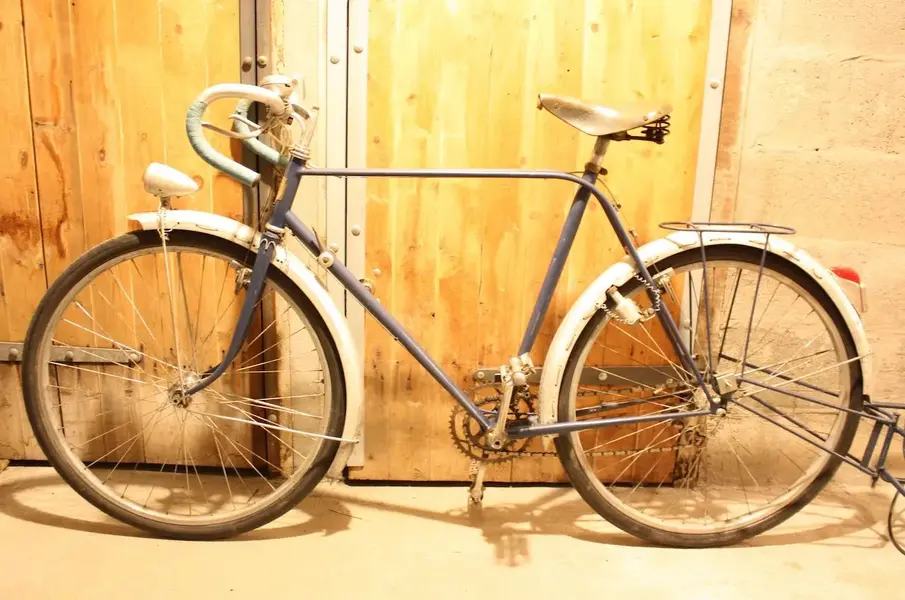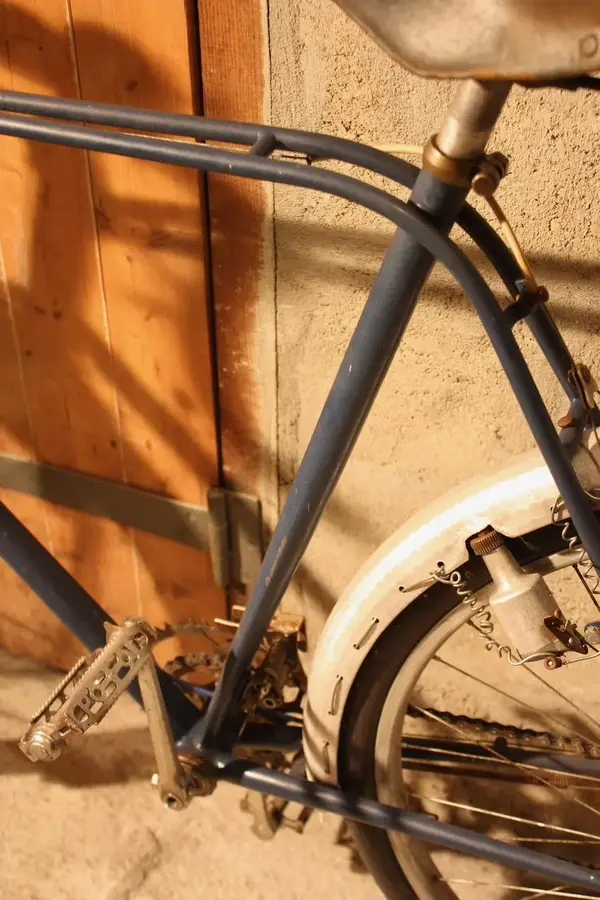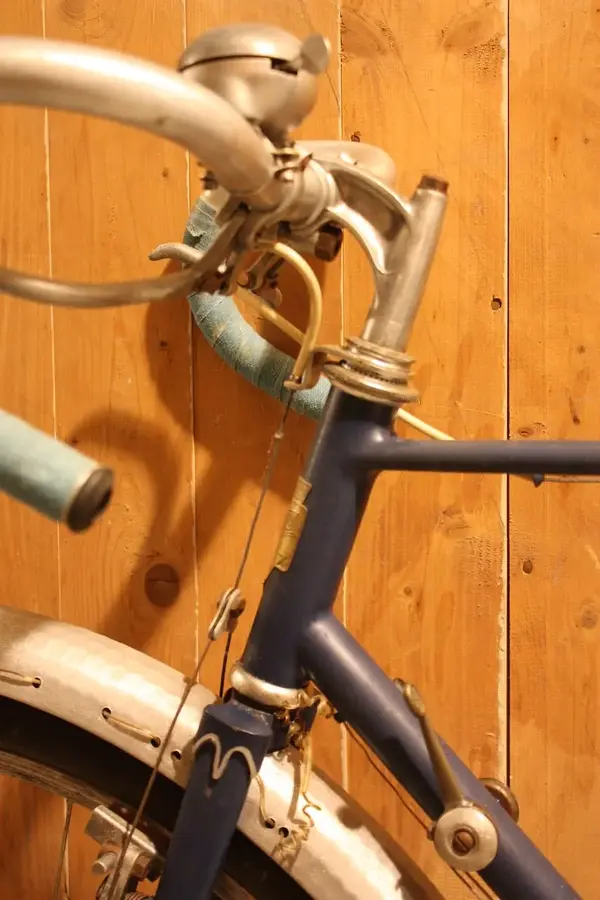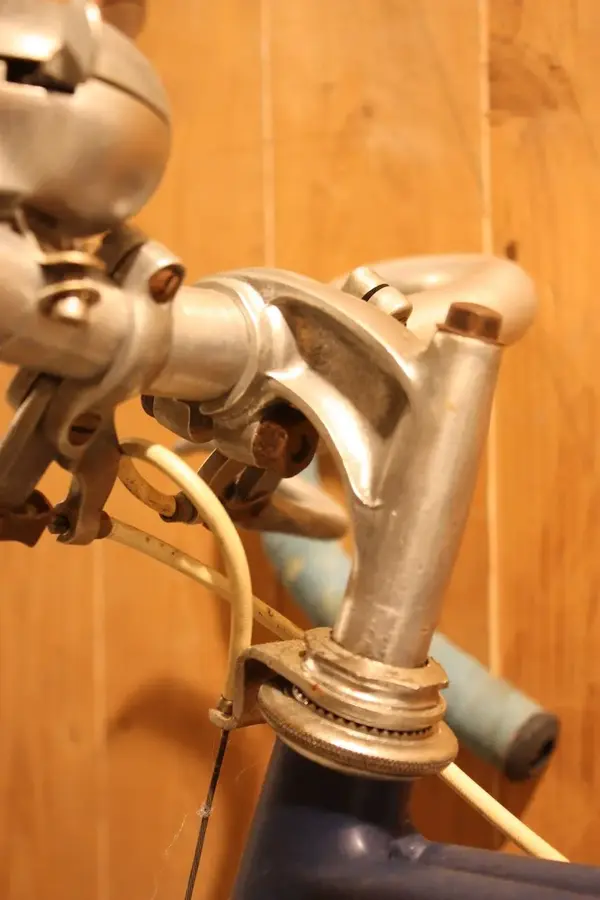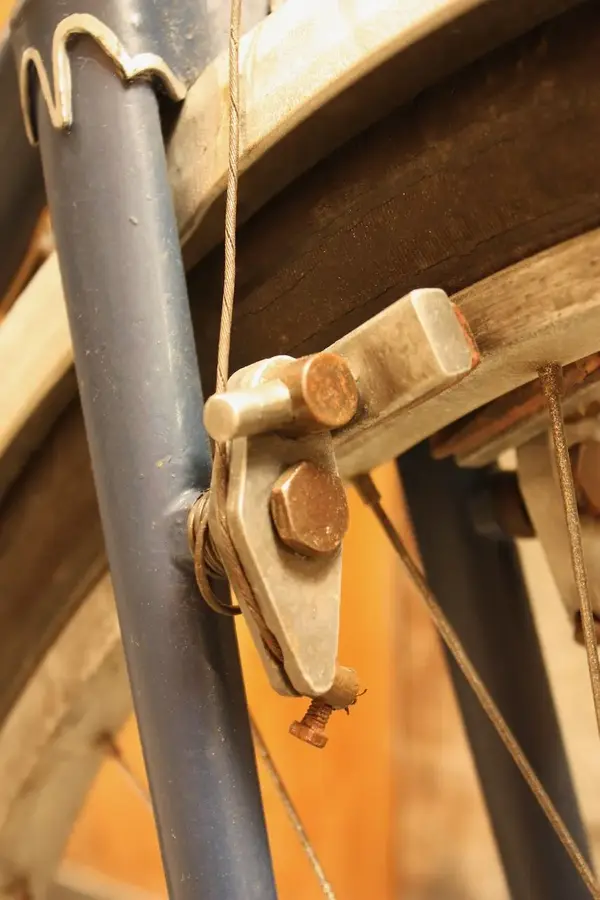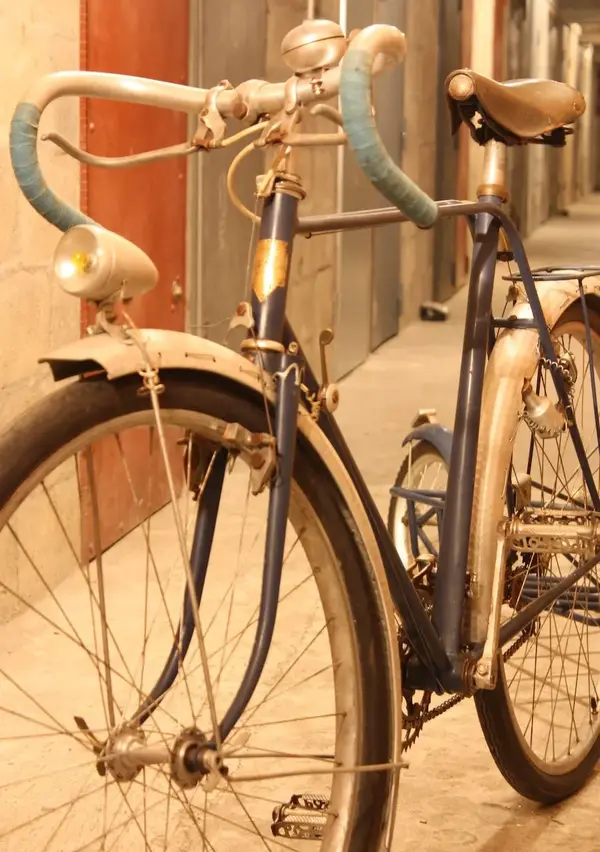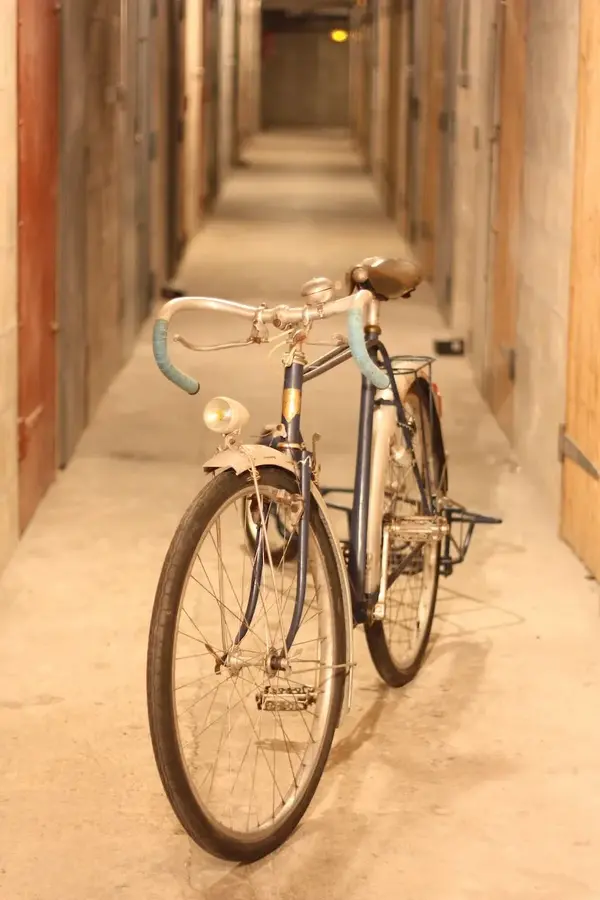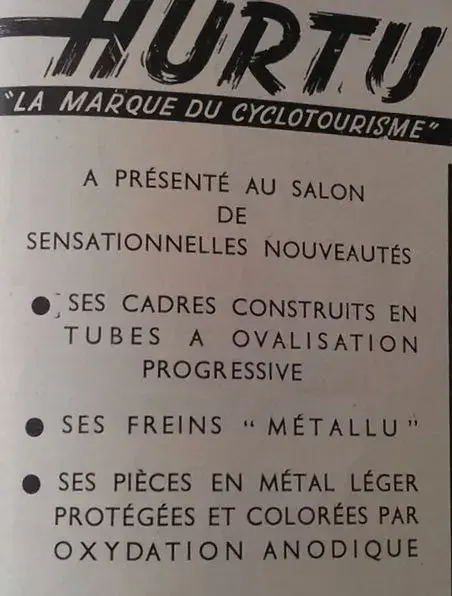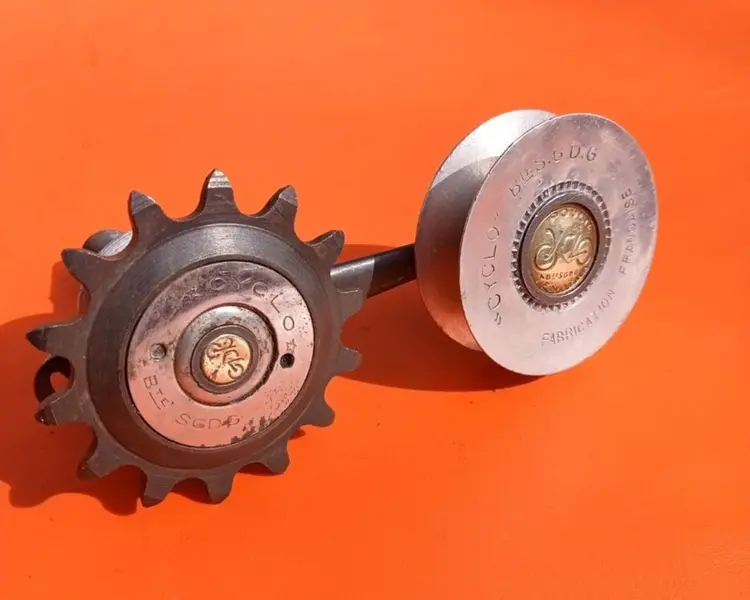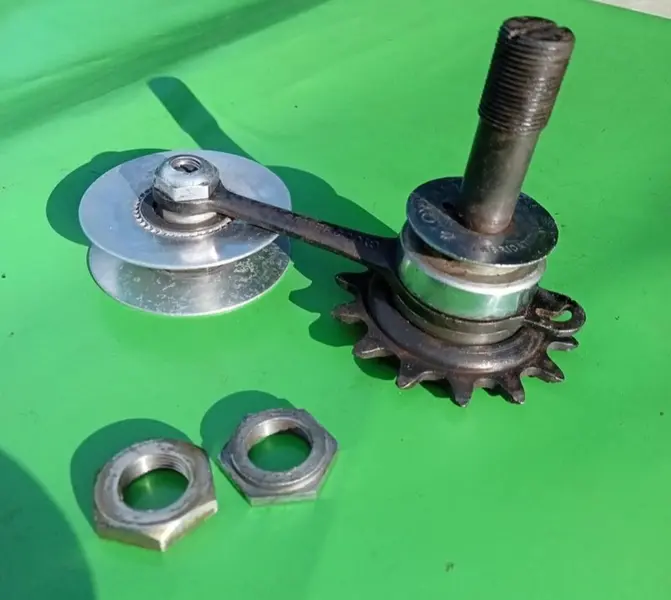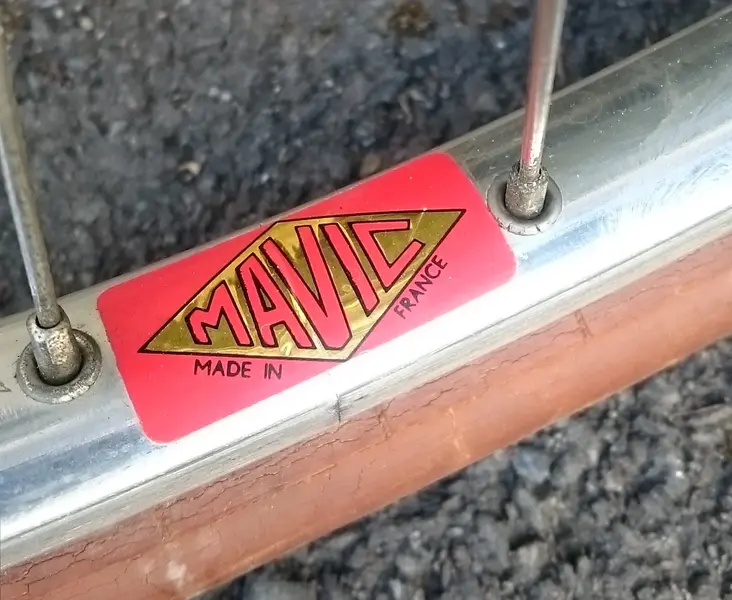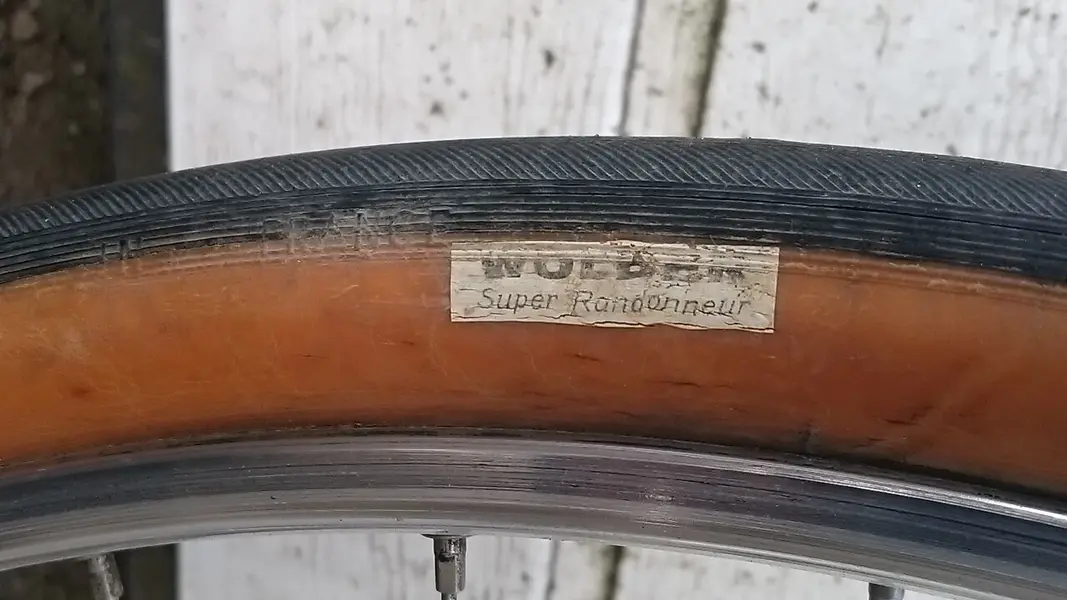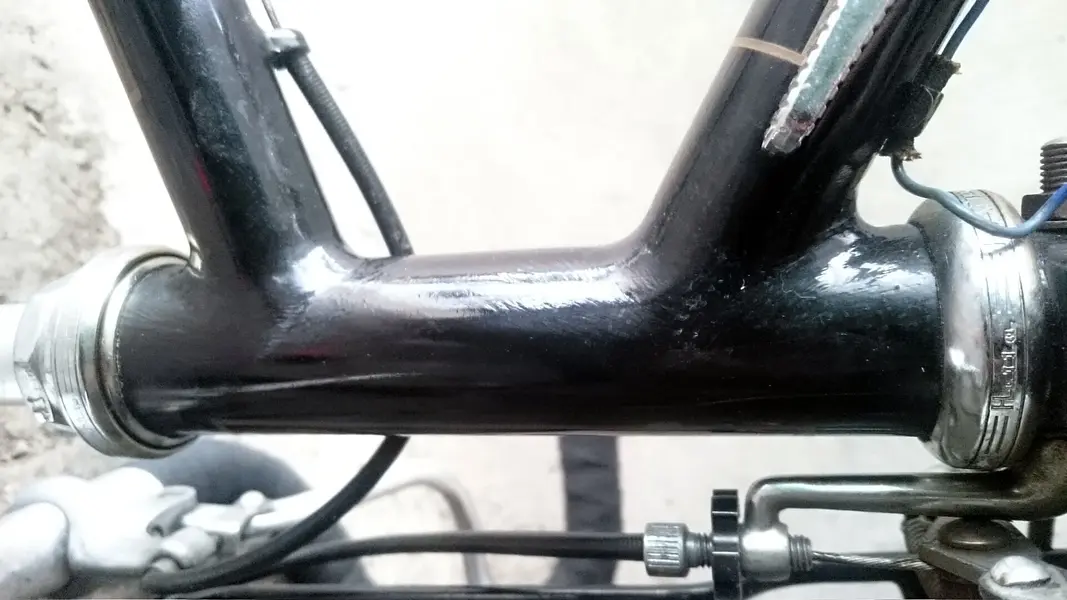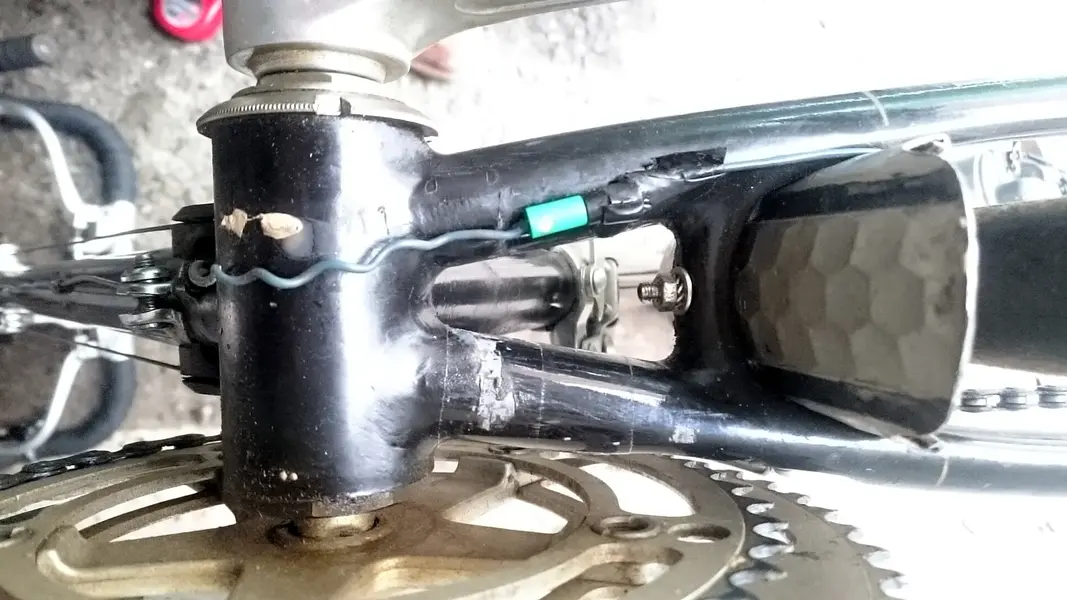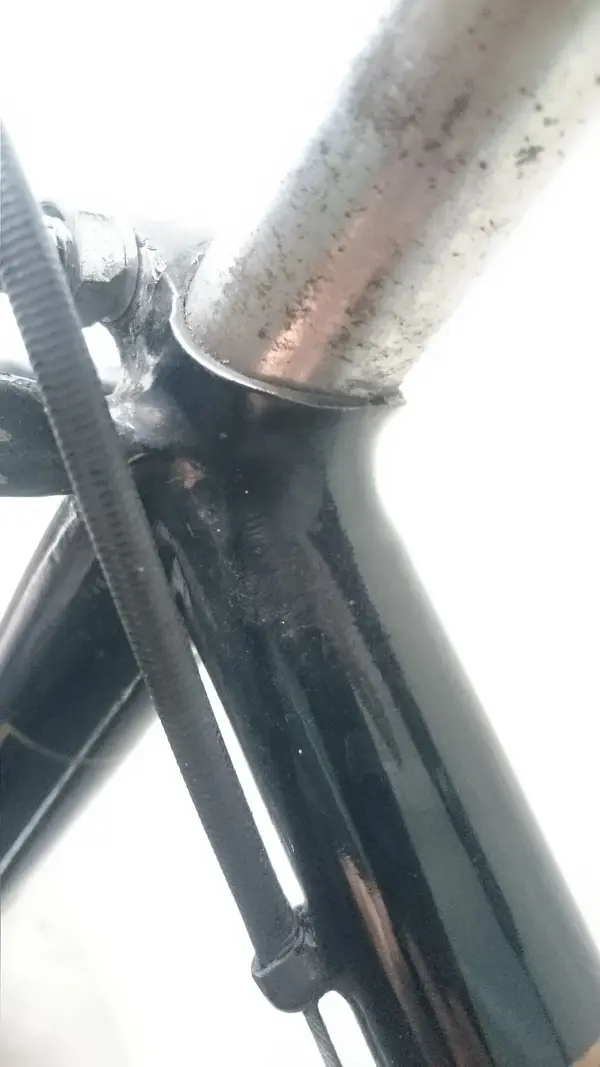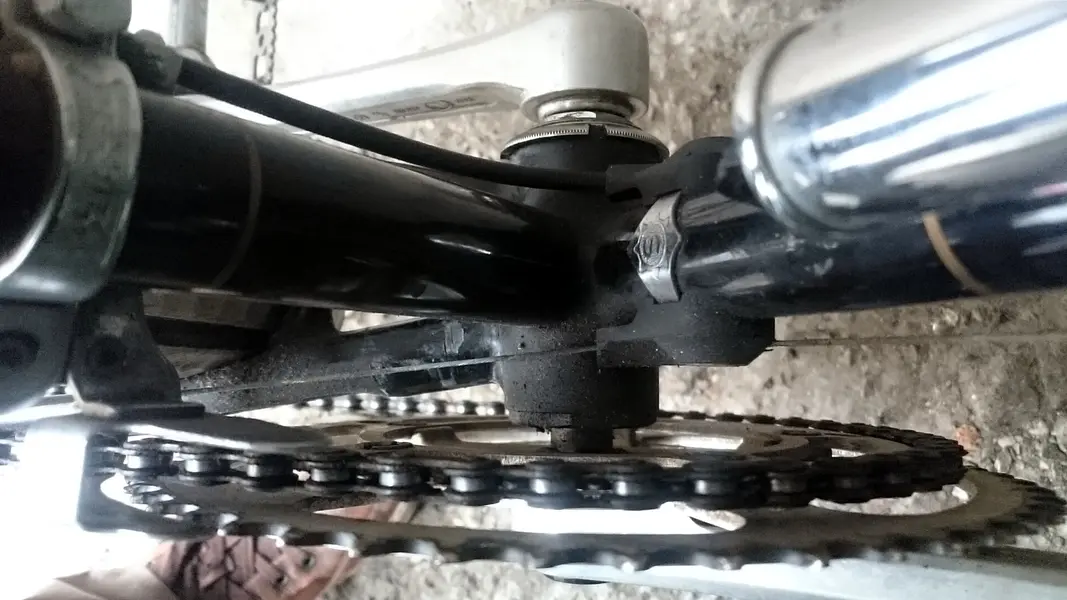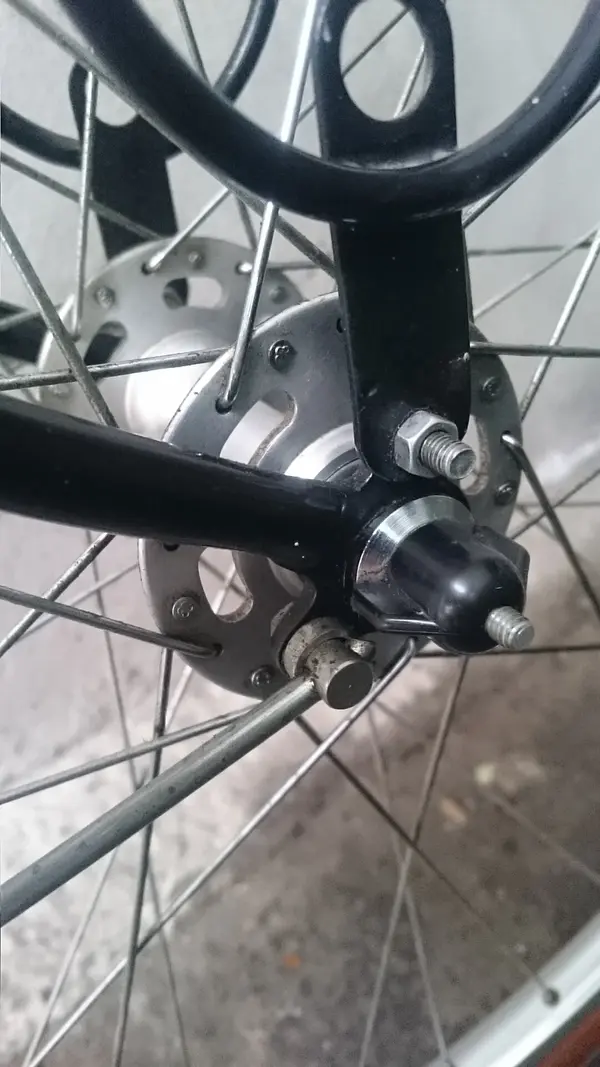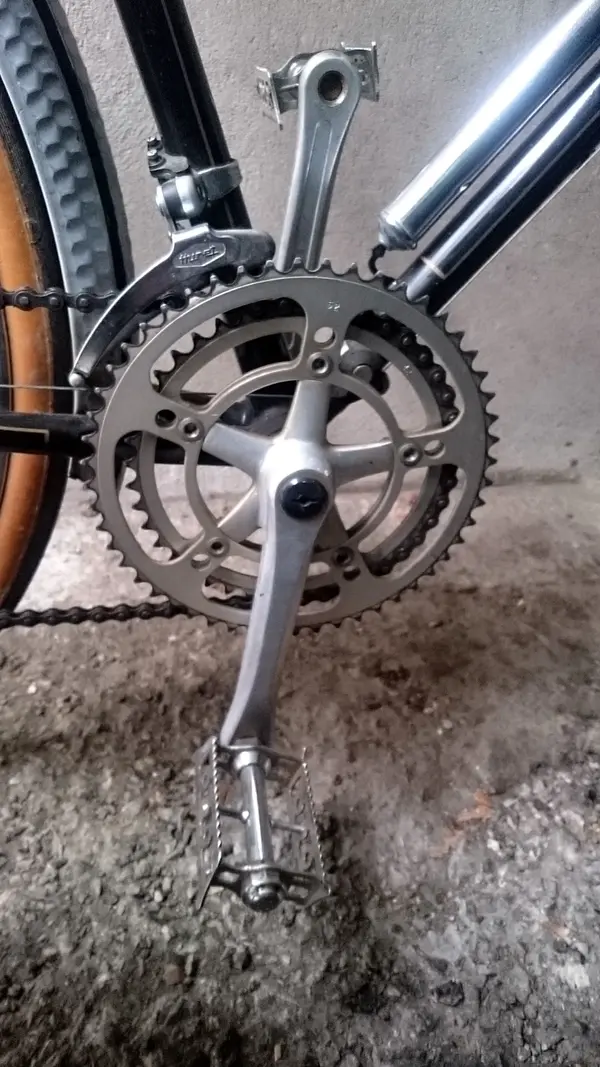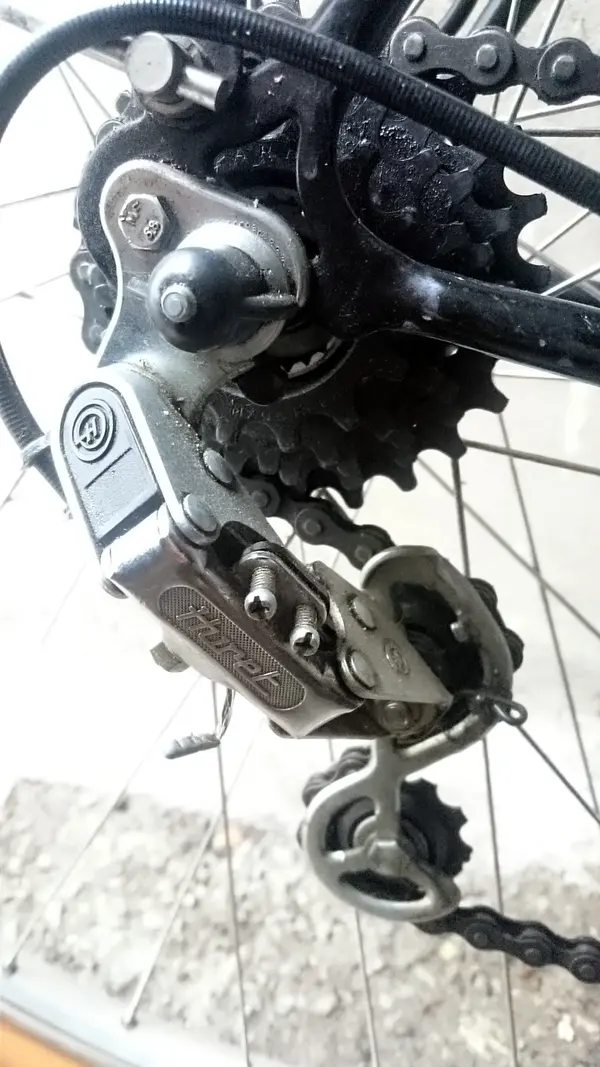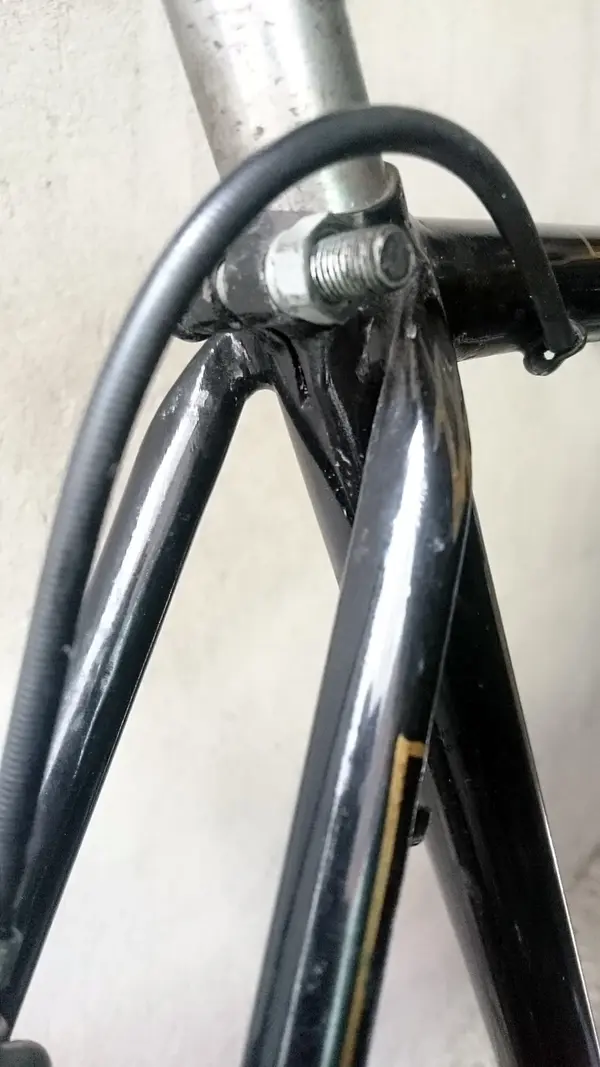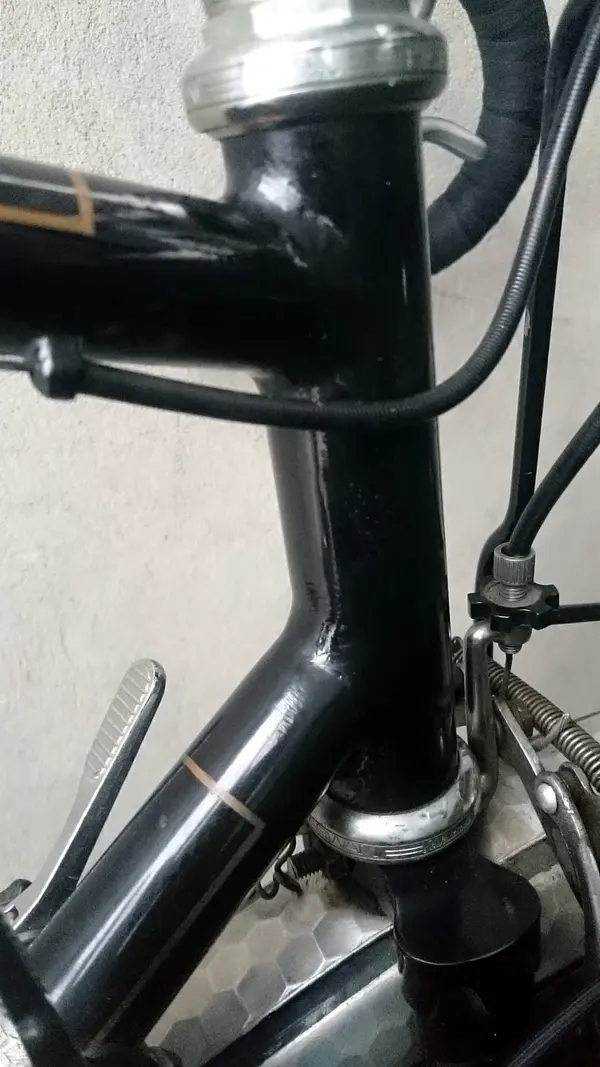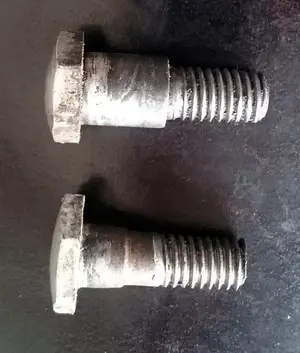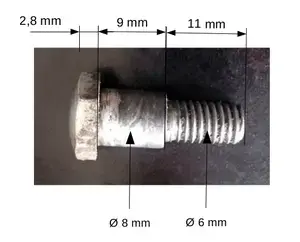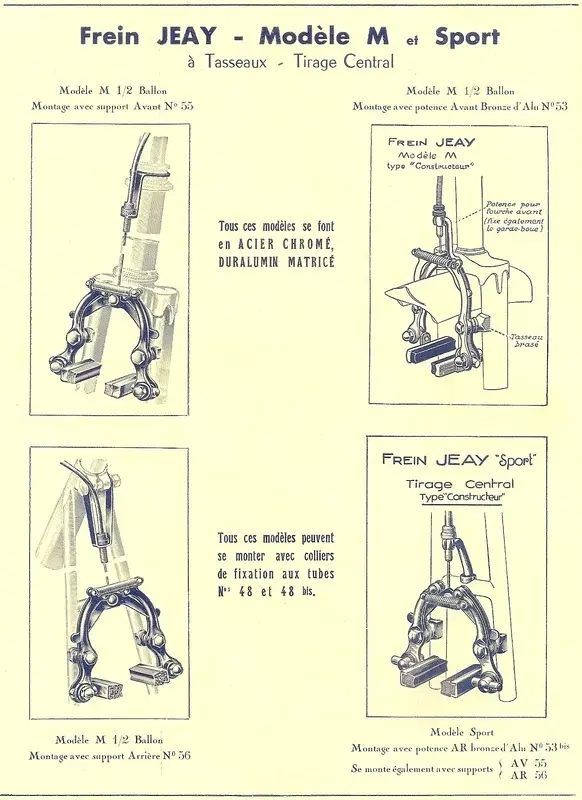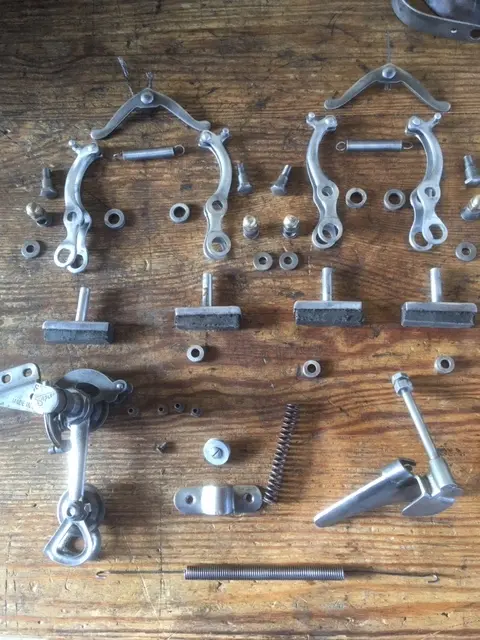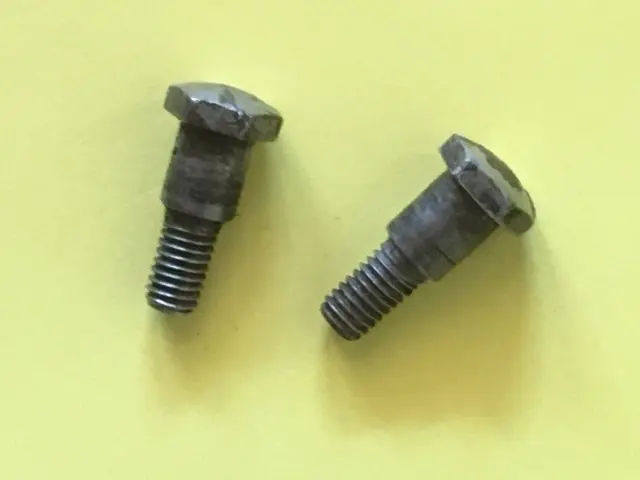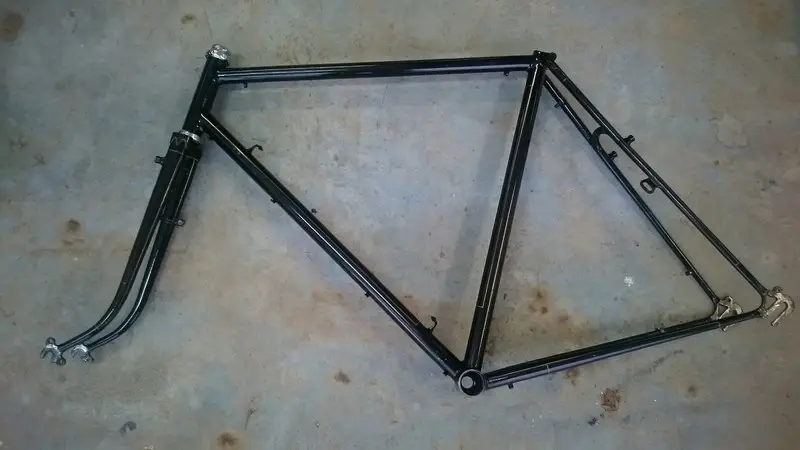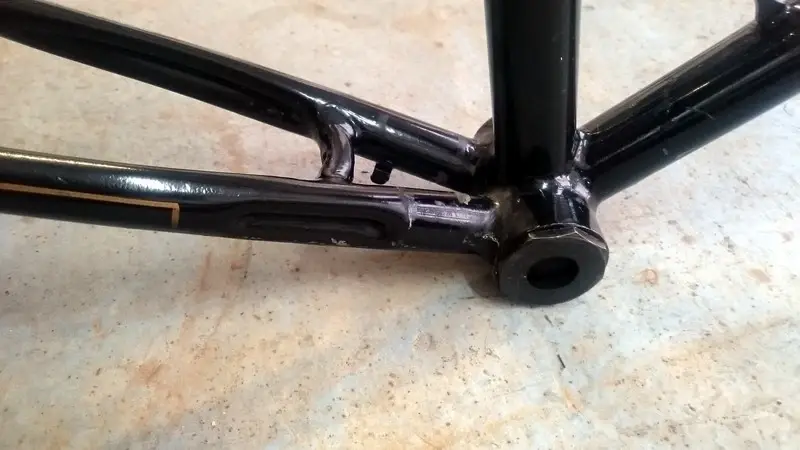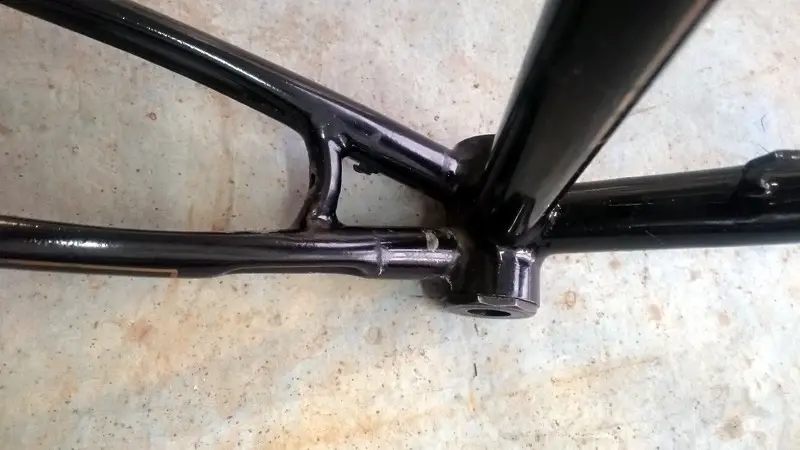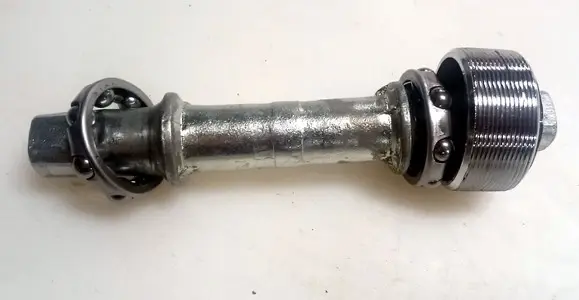You are using an out of date browser. It may not display this or other websites correctly.
You should upgrade or use an alternative browser.
You should upgrade or use an alternative browser.
Vintage French randonneuer's and porteurs.
- Thread starter Guinessisgoodforyou
- Start date
Guinessisgoodforyou
rBotM Winner
A beautiful Hurtu. I posted a very similar eliptical tubed frame earlier in the thread, this also has twin tubes in 1947! This has the matching trailer. I think I may be in love. Translation below.
I went out to buy a wheel and came back with a whole bike.
I don't know if it's the original paint as there are no threads and many parts have been painted silver.
Although it's complete, I can't test it yet as the steering and gears are all blocked.










I went out to buy a wheel and came back with a whole bike.
I don't know if it's the original paint as there are no threads and many parts have been painted silver.
Although it's complete, I can't test it yet as the steering and gears are all blocked.
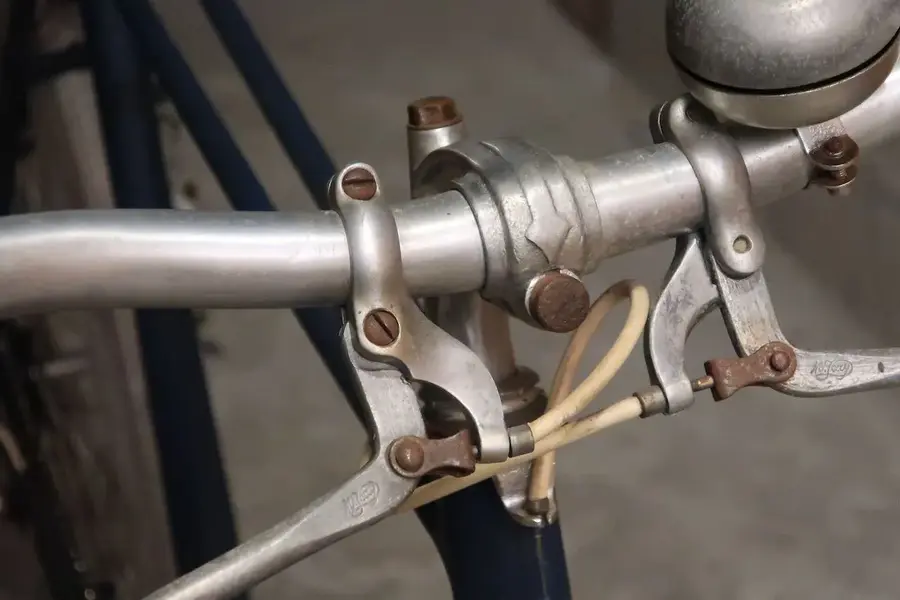
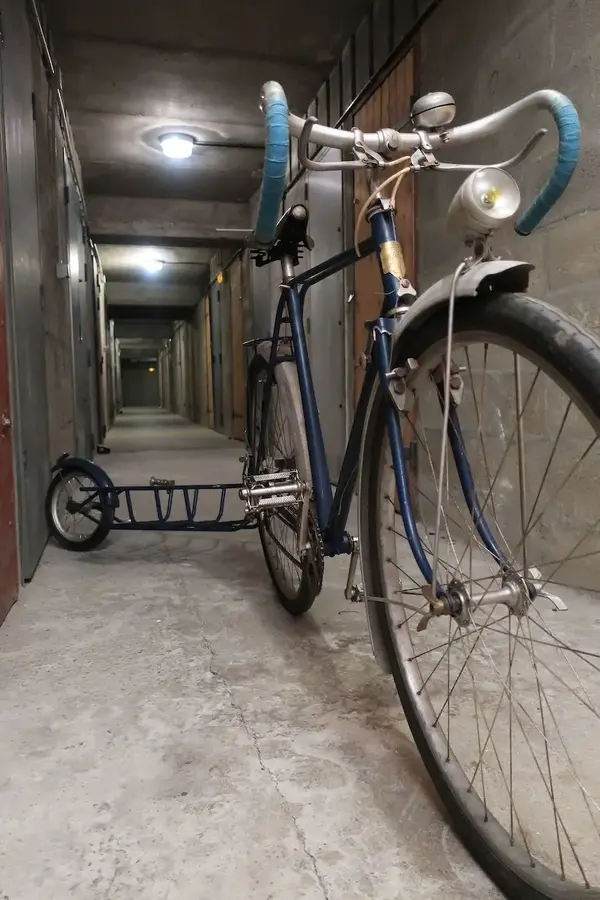
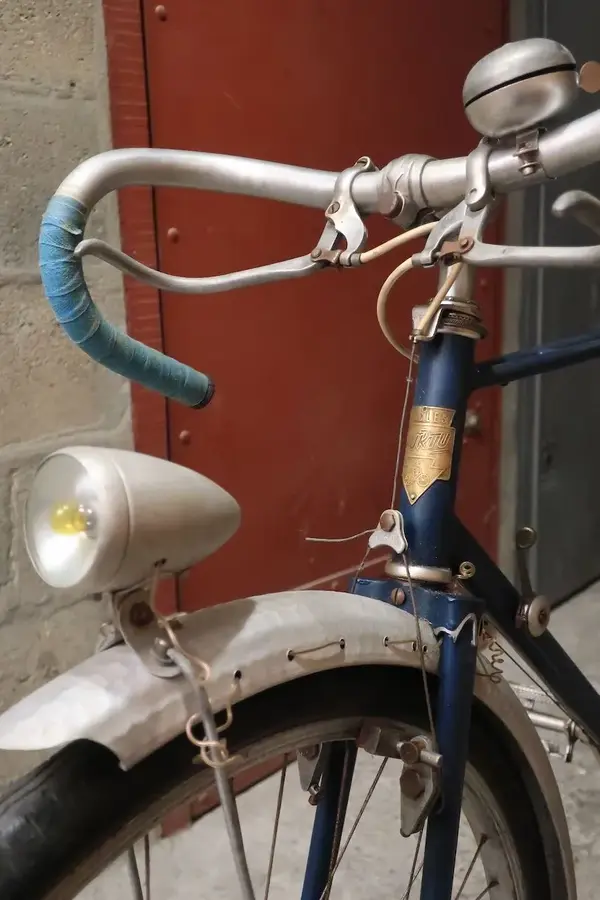
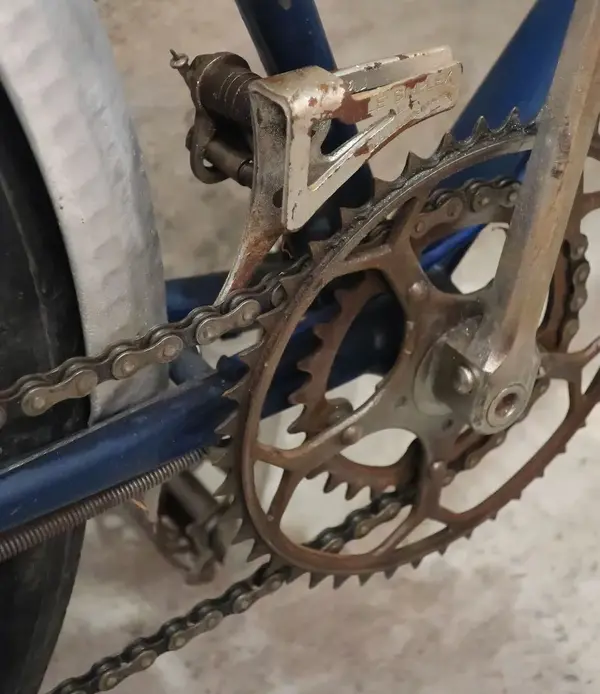
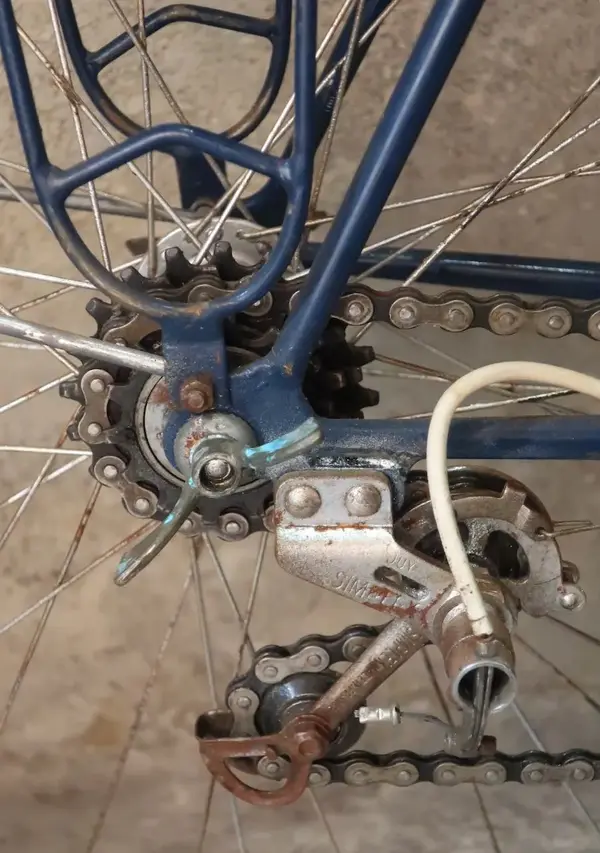
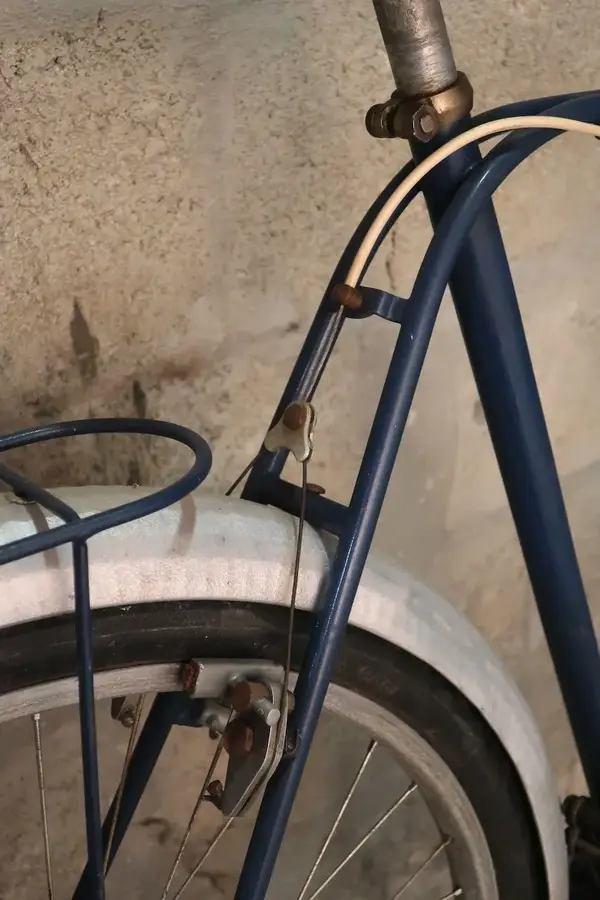
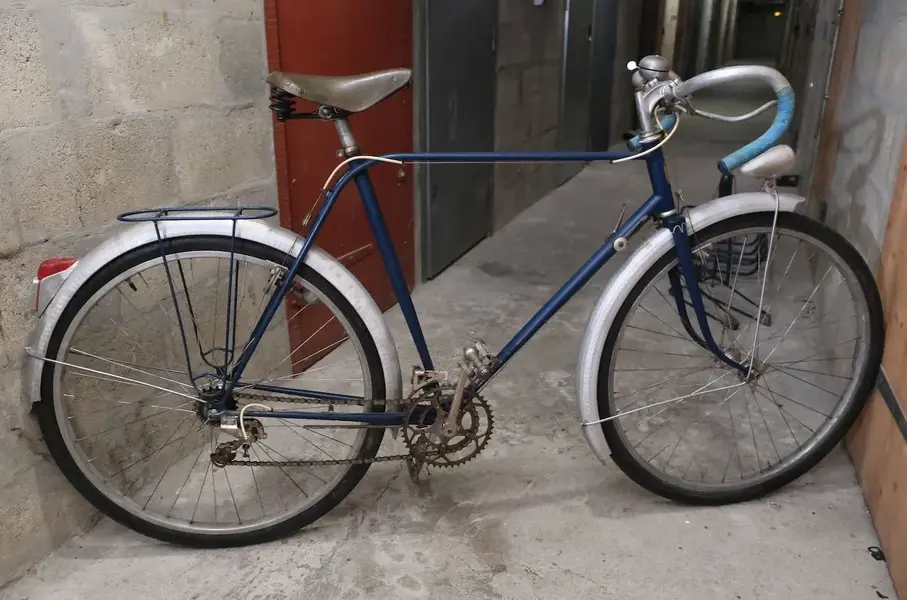
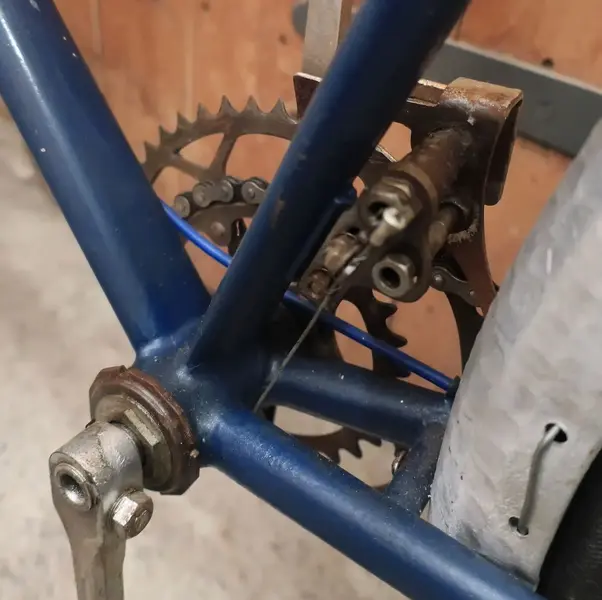
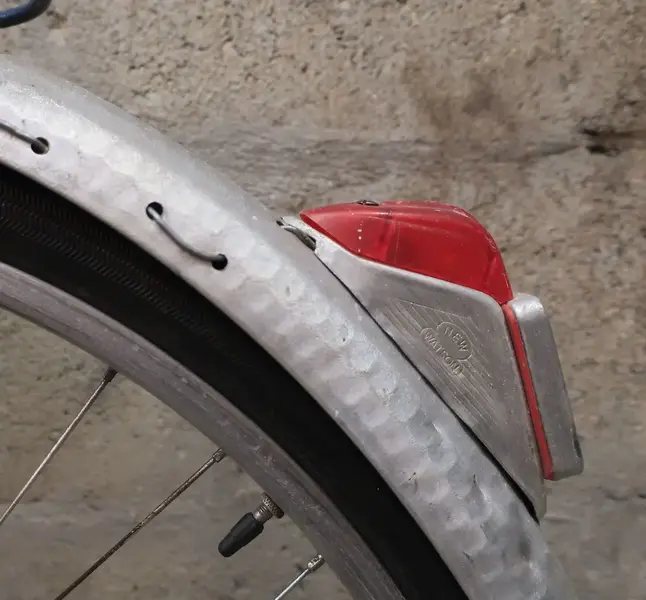
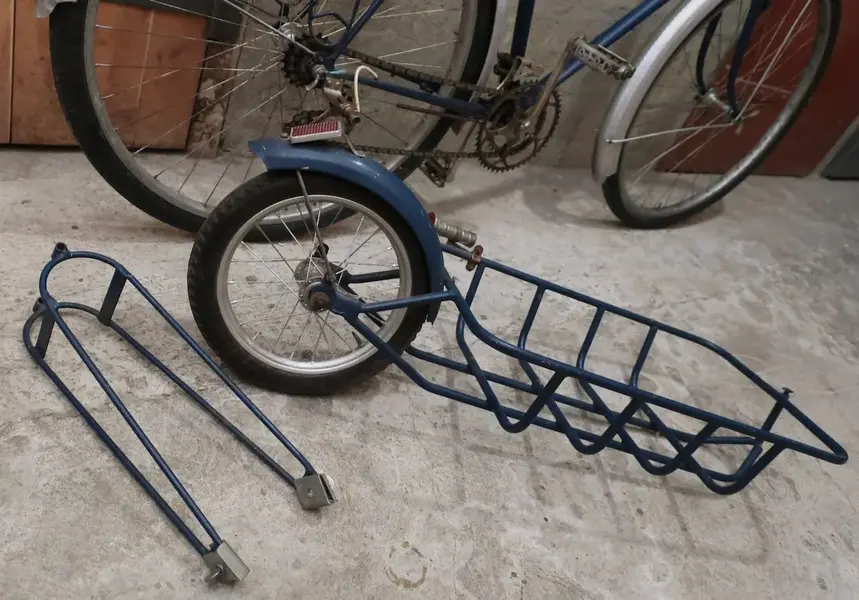
Guinessisgoodforyou
rBotM Winner
Retrorockit
Retro Guru
In post#1656 showing the bike with the compound gearing, in all photos the fork appears to be installed backwards. I wonder if this is explained at all in the French newspaper article? This is a common defect here in the US on new bikes assembled at big box stores by clueless stock clerks. I was not expecting to see this at the sharp end of French cycling. Perhaps this was an inside joke by his mechanic?
Last edited:
In post#1656 showing the bike with the compound gearing, in all photos the fork appears to be installed backwards. I wonder if this is explained at all in the French newspaper article? This is a common defect here in the US on new bikes assembled at big box stores by clueless stock clerks. I was not expecting to see this at the sharp end of French cycling. Perhaps this was an inside joke by his mechanic?
It's a stayer. Forks are installed that way to get the rider closer to the moto-pacer.
https://www.bikehugger.com/posts/stayer-bikes/
Retrorockit
Retro Guru
Thanks for the context on that. I guess if no steering is involved it wouldn't matter much.
Canuk
Old School Grand Master
That Rene Andre is sublime. I've been looking at a lot of French components recently (for a build) and never ceases to amaze the level of ingenuity and QC that goes into their products. Where did it all go wrong for the French!?
I guess that lower end Simplex and Huret just got cheaper and nastier and the Japs took advantage. Or did they?
Check out this Cyclo marvel of derailleur design.
I guess that lower end Simplex and Huret just got cheaper and nastier and the Japs took advantage. Or did they?
Check out this Cyclo marvel of derailleur design.
Attachments
Guinessisgoodforyou
rBotM Winner
The unkown campeur.I love a good story and a mystery. This is the story of one mans quest to identify his bike, build it to suit himself, even though its not really high end. Then a short review of tour after restoration. Translation below
Hello,
I've been looking for an old bike for a while now, so I can cycle in style and elegance.
And to satisfy my general taste for second-hand goods.
So here I am, I've fallen for this bike in my region.
According to the seller, the only information is
50s bike, modernized in the 70s shipped by train for this makeover, according to the family, but not sure where. The owner is said to have been on it for 90 years which leaves me just under 40 years to enjoy it.
Do you have any idea of the identification of the frame? Knowing that there are no marks or numbers engraved on it.
There are no connectors: welded tubes or internal connectors?
First 30 km outing: it's a blast! It rolls along on its own, and doesn't make a sound on the stony roads!
Of course, the leather on the Brooks is hard and not suited to my posterior.
Here are a few photos of the frame, because that's what I'd like to identify...
I'd like to fit a triple crankset with a small chainring around 30 to make it easier to climb the Breton hills once it's loaded, but keep it in keeping with the style and period. I'm looking for a screw for the LAM rear brake (the top one, to replace the bottom one).
I've just bought a TA, on the bon coin, in 52/42/32. I've got 52/42 at the moment, and I had a hard time of it on a hill this afternoon!
For the axle, I don't know exactly what's in place, but from dust cover to dust cover it's 127 mm,the bottom bracket shell is 67mm.
For the screw, I measured. The head is domed, it's nicer, 11mm spanner size.
Bike being dismantled/cleaned/greased. Pictures soon.
I want to change the tyres, which are very nice but all cracked...
They're Wolber 650x32B. I find them a bit thin compared to the beautiful Le Martelé mudguards.
The original fitting should have been 650x42B?
So I'm hesitating between Cypress (32B) or Beech (42B) Grand Bois. Or something in between in 36 or 38B.
I've also read some comments about the longevity of these tyres that aren't always very good.
Good evening,
The bike is completely dismantled and everything is being cleaned/polished.
Regarding the derailleur, long or short cage, I can't at the moment test whether it works with the current derailleur. Huret eco short cage.
But as the subject has everything to interest me. I'm still looking into long cages.
After a lot of reading, sometimes contradictory. It seems that a long clevis derailleur, old, French, and which functions, it is not obvious.
I'm thinking of the Huret Jubilee, magnificent, and very very expensive...
I'm thinking of getting rid of the Huret Duopar titanium, which is too fragile and looks a bit out of place on my bike.
I'm thinking of the Huret Allvit praised by prosperjunior, which would fit in well with the style.
What are the other possibilities?
The frame with the fork, as shown in the photo weighs 3.56 Kg.
I haven't managed to remove the right-hand bottom bracket cup. Another spanner with a diameter in between, and I don't dare use a spanner, although I've got some really big ones! I think it's possible to reassemble the crankset like that.
By the way, here's the axle, 125 mm long.
Restoration complete!
After a complete dismantling, cleaning and polishing of all the parts, reassembly by changing:
The crankset for the new TA triple.
Tyres for 42B (Grand Bois Hetre) + tubes
Velox handlebars
Rear brake cable
The seat tube (diameter 24.2) is really short: 12 cm. As a result, I don't dare raise the saddle too much. Here, to be on the safe side, there's only 4 cm embedded in the vertical tube. 24.2 mm, would that give any indication of the type of tubes?
Whatever these tubes are, and the total lack of information about the genesis of this frame, I'm very happy with this bike.
After a 400km ride in Brittany over 6 days, the bike came back dirtier than it was before it was dismantled/assembled, but the rider didn't suffer too much.
I don't have the experience or the comparison with the same kind of ride on another old bike, but there, apart from perhaps the narrow handlebars that don't allow much choice of position, I found the experience very pleasant and comfortable.
Well, if anyone has a 14-28 Maillard Normandy freewheel, I'd love to have one (Brittany isn't flat at all).
A brief review of the month spent hiking.
After the grand tour of Finistère, a one-way trip from Brest to Tours on the Nantes to Brest canal and then the Loire by bike.
All in all, a good thousand kilometres of cycling:
Apart from a couple of punctures and a few loose nuts on the trails, there were few technical problems.
The bike feels comfortable, given my limited experience of old bikes.
It's really pleasant, and I'm not just talking about the congratulations along the way :-D
The only point of discomfort would be the hands: vibrations in the handlebars, or perhaps the position of my hands, or low-quality mittens?
I didn't record the track on the canal.
But it's hard to get lost, except around Lac de Guerledan, where the junction with the Voie Verte that runs around the lake from Brest is not well signposted. And the coast is downright steep!
The distance is known: 360 km (my bike is leaning against milestone 357 near Chateaulin).
We used a very practical guide to prepare the stages: the ‘miam miam dodo’ of the canal. I highly recommend it.
The canal is maintained by the départements and you can feel the difference every time you change the state of the towpath.
In Finistère, the surface is random, generally fairly smooth but not very comfortable. On the other hand, there are regularly shelters for breaks.
In the Côtes d'Amor, the surface is uniform and smooth: a fine stabilised surface.
In Morbihan, everything is tarmac and smooth.
In the small part of Ile et Vilaine and Loire Atlantique, it's hell. It's often a particularly uncomfortable and painful stony stabilised surface.
In fact, if you don't want to do the 360 km, I'd advise you to skip Redon/Nantes. While the northern part of this section is very pretty, the finish in Nantes is of little interest (and leaves the canal).
We set off from Chateaulin, which is the real start (in the north/south direction). The Chateaulin/Brest section of the Nantes-Brest canal is in fact the Brest roadstead... not very practical by bike. There is a TER (regional express train) that makes the connection. For the brave, you can cycle via Plougastel and its strawberries. It's very pretty and very, very hilly.
One last piece of advice: beware of campsites, although most are very nice, many are only open in summer.
As for the bottom bracket axle, it turned well when it wasn't coming loose either, but a better-made axle would probably be welcome.
The pretty Huret speedo refused to count from 396 km onwards... it began to offer resistance beyond the capacity of the little belt, which skidded desperately until I released it.
I had time to think carefully about my developments. (Gearing gigfy)
Loaded (15 to 18 kg), or even empty, the smallest gear (32x24) is really too big.
As for the large chainring, knowing the improbability of the Jeay braking system (yes, it's the only real fault), in any case, I don't let the bike pick up too much speed when I'm on the move.
My basic gearing, when touring with a load, is 42x19, but it could be a little longer.
At 42x19, the chain line is perfect.
Routinely, on the flat, I switch to 42x21 when it's tiring or a bit windy, 42x17 if I'm in better shape or when it's rolling well.
That's an average development of 4.67 m.
As soon as the going gets tough, I switch to the ‘small’ 32 chainring, staying in 19 or 21 at the rear, and when the going gets tough, I give it my all in 32x24 (2.81 m), which can sometimes be quite steep.
So my original basic gear ratio would be between 42x20 and 46x20, but with a bit more choice.
The minimum development would be 2.11m.
That's better than 2.81 m, but going below 2 m would certainly be interesting, and why not dream, 1.5 m.
But to do that, you'd need a large 34 sprocket, which would save the day.
As neither the 42 nor the 46 chainring would use this large sprocket, it might be possible with a short cage?
Or a 30x26?
Anyway, that's all very well in the calculations, but you need to find the gear.
Of course, TA chainrings are still made, but with the laser-engraved is not very seventies. I'd prefer to find vintage ones, but you have to find them.
As for the sprockets, I have the double 14-17, the 28, but not the 20 nor the 23, and even less a 34. And it doesn't look that easy to find!
Otherwise, I've found a nice Allvit from the sixties that will be fitted this winter, and a brand new, all-steel, chrome-plated Huret cable guide that will fit better than the current plastic Huret.










Hello,
I've been looking for an old bike for a while now, so I can cycle in style and elegance.
And to satisfy my general taste for second-hand goods.
So here I am, I've fallen for this bike in my region.
According to the seller, the only information is
50s bike, modernized in the 70s shipped by train for this makeover, according to the family, but not sure where. The owner is said to have been on it for 90 years which leaves me just under 40 years to enjoy it.
Do you have any idea of the identification of the frame? Knowing that there are no marks or numbers engraved on it.
There are no connectors: welded tubes or internal connectors?
First 30 km outing: it's a blast! It rolls along on its own, and doesn't make a sound on the stony roads!
Of course, the leather on the Brooks is hard and not suited to my posterior.
Here are a few photos of the frame, because that's what I'd like to identify...
I'd like to fit a triple crankset with a small chainring around 30 to make it easier to climb the Breton hills once it's loaded, but keep it in keeping with the style and period. I'm looking for a screw for the LAM rear brake (the top one, to replace the bottom one).
I've just bought a TA, on the bon coin, in 52/42/32. I've got 52/42 at the moment, and I had a hard time of it on a hill this afternoon!
For the axle, I don't know exactly what's in place, but from dust cover to dust cover it's 127 mm,the bottom bracket shell is 67mm.
For the screw, I measured. The head is domed, it's nicer, 11mm spanner size.
Bike being dismantled/cleaned/greased. Pictures soon.
I want to change the tyres, which are very nice but all cracked...
They're Wolber 650x32B. I find them a bit thin compared to the beautiful Le Martelé mudguards.
The original fitting should have been 650x42B?
So I'm hesitating between Cypress (32B) or Beech (42B) Grand Bois. Or something in between in 36 or 38B.
I've also read some comments about the longevity of these tyres that aren't always very good.
Good evening,
The bike is completely dismantled and everything is being cleaned/polished.
Regarding the derailleur, long or short cage, I can't at the moment test whether it works with the current derailleur. Huret eco short cage.
But as the subject has everything to interest me. I'm still looking into long cages.
After a lot of reading, sometimes contradictory. It seems that a long clevis derailleur, old, French, and which functions, it is not obvious.
I'm thinking of the Huret Jubilee, magnificent, and very very expensive...
I'm thinking of getting rid of the Huret Duopar titanium, which is too fragile and looks a bit out of place on my bike.
I'm thinking of the Huret Allvit praised by prosperjunior, which would fit in well with the style.
What are the other possibilities?
The frame with the fork, as shown in the photo weighs 3.56 Kg.
I haven't managed to remove the right-hand bottom bracket cup. Another spanner with a diameter in between, and I don't dare use a spanner, although I've got some really big ones! I think it's possible to reassemble the crankset like that.
By the way, here's the axle, 125 mm long.
Restoration complete!
After a complete dismantling, cleaning and polishing of all the parts, reassembly by changing:
The crankset for the new TA triple.
Tyres for 42B (Grand Bois Hetre) + tubes
Velox handlebars
Rear brake cable
The seat tube (diameter 24.2) is really short: 12 cm. As a result, I don't dare raise the saddle too much. Here, to be on the safe side, there's only 4 cm embedded in the vertical tube. 24.2 mm, would that give any indication of the type of tubes?
Whatever these tubes are, and the total lack of information about the genesis of this frame, I'm very happy with this bike.
After a 400km ride in Brittany over 6 days, the bike came back dirtier than it was before it was dismantled/assembled, but the rider didn't suffer too much.
I don't have the experience or the comparison with the same kind of ride on another old bike, but there, apart from perhaps the narrow handlebars that don't allow much choice of position, I found the experience very pleasant and comfortable.
Well, if anyone has a 14-28 Maillard Normandy freewheel, I'd love to have one (Brittany isn't flat at all).
A brief review of the month spent hiking.
After the grand tour of Finistère, a one-way trip from Brest to Tours on the Nantes to Brest canal and then the Loire by bike.
All in all, a good thousand kilometres of cycling:
Apart from a couple of punctures and a few loose nuts on the trails, there were few technical problems.
The bike feels comfortable, given my limited experience of old bikes.
It's really pleasant, and I'm not just talking about the congratulations along the way :-D
The only point of discomfort would be the hands: vibrations in the handlebars, or perhaps the position of my hands, or low-quality mittens?
I didn't record the track on the canal.
But it's hard to get lost, except around Lac de Guerledan, where the junction with the Voie Verte that runs around the lake from Brest is not well signposted. And the coast is downright steep!
The distance is known: 360 km (my bike is leaning against milestone 357 near Chateaulin).
We used a very practical guide to prepare the stages: the ‘miam miam dodo’ of the canal. I highly recommend it.
The canal is maintained by the départements and you can feel the difference every time you change the state of the towpath.
In Finistère, the surface is random, generally fairly smooth but not very comfortable. On the other hand, there are regularly shelters for breaks.
In the Côtes d'Amor, the surface is uniform and smooth: a fine stabilised surface.
In Morbihan, everything is tarmac and smooth.
In the small part of Ile et Vilaine and Loire Atlantique, it's hell. It's often a particularly uncomfortable and painful stony stabilised surface.
In fact, if you don't want to do the 360 km, I'd advise you to skip Redon/Nantes. While the northern part of this section is very pretty, the finish in Nantes is of little interest (and leaves the canal).
We set off from Chateaulin, which is the real start (in the north/south direction). The Chateaulin/Brest section of the Nantes-Brest canal is in fact the Brest roadstead... not very practical by bike. There is a TER (regional express train) that makes the connection. For the brave, you can cycle via Plougastel and its strawberries. It's very pretty and very, very hilly.
One last piece of advice: beware of campsites, although most are very nice, many are only open in summer.
As for the bottom bracket axle, it turned well when it wasn't coming loose either, but a better-made axle would probably be welcome.
The pretty Huret speedo refused to count from 396 km onwards... it began to offer resistance beyond the capacity of the little belt, which skidded desperately until I released it.
I had time to think carefully about my developments. (Gearing gigfy)
Loaded (15 to 18 kg), or even empty, the smallest gear (32x24) is really too big.
As for the large chainring, knowing the improbability of the Jeay braking system (yes, it's the only real fault), in any case, I don't let the bike pick up too much speed when I'm on the move.
My basic gearing, when touring with a load, is 42x19, but it could be a little longer.
At 42x19, the chain line is perfect.
Routinely, on the flat, I switch to 42x21 when it's tiring or a bit windy, 42x17 if I'm in better shape or when it's rolling well.
That's an average development of 4.67 m.
As soon as the going gets tough, I switch to the ‘small’ 32 chainring, staying in 19 or 21 at the rear, and when the going gets tough, I give it my all in 32x24 (2.81 m), which can sometimes be quite steep.
So my original basic gear ratio would be between 42x20 and 46x20, but with a bit more choice.
The minimum development would be 2.11m.
That's better than 2.81 m, but going below 2 m would certainly be interesting, and why not dream, 1.5 m.
But to do that, you'd need a large 34 sprocket, which would save the day.
As neither the 42 nor the 46 chainring would use this large sprocket, it might be possible with a short cage?
Or a 30x26?
Anyway, that's all very well in the calculations, but you need to find the gear.
Of course, TA chainrings are still made, but with the laser-engraved is not very seventies. I'd prefer to find vintage ones, but you have to find them.
As for the sprockets, I have the double 14-17, the 28, but not the 20 nor the 23, and even less a 34. And it doesn't look that easy to find!
Otherwise, I've found a nice Allvit from the sixties that will be fitted this winter, and a brand new, all-steel, chrome-plated Huret cable guide that will fit better than the current plastic Huret.
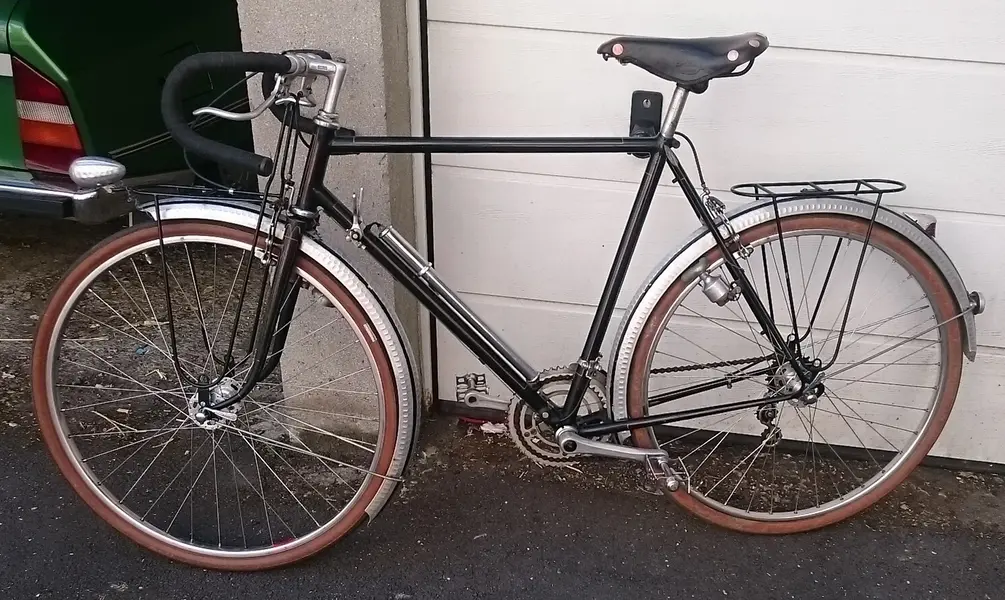
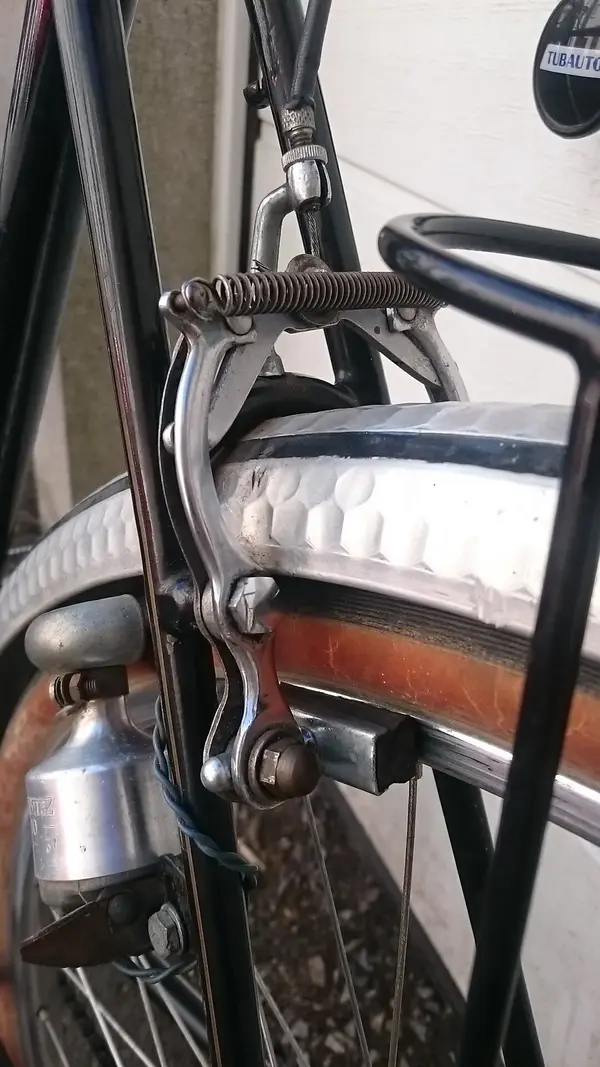
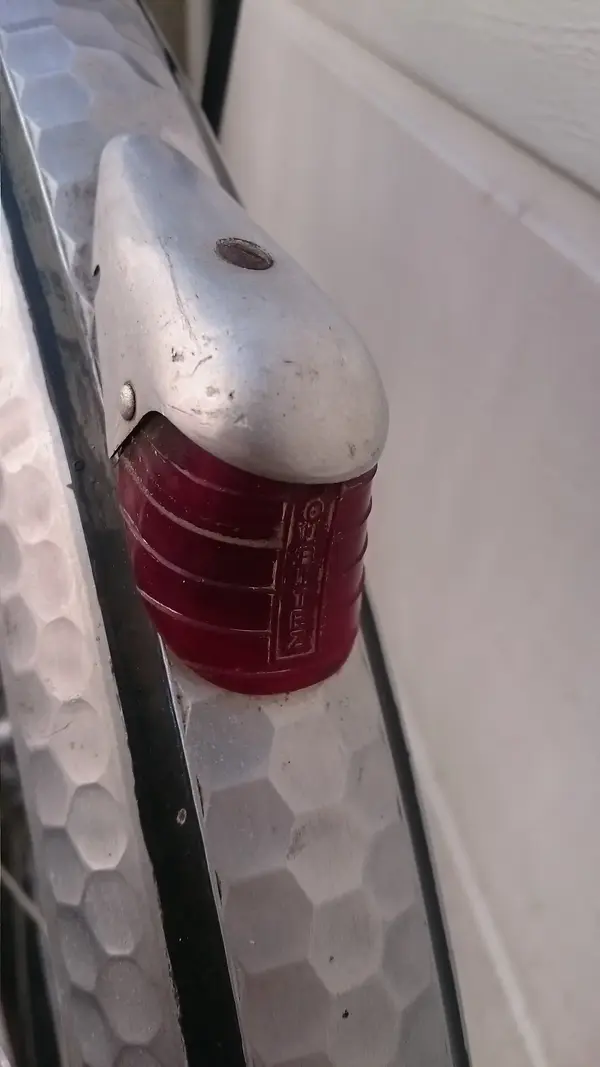
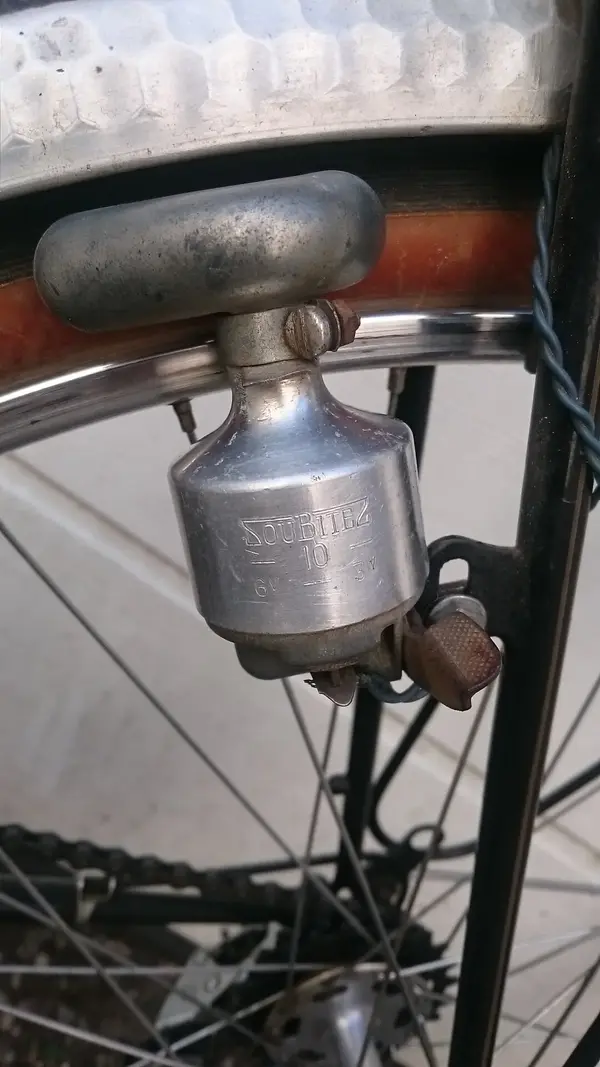
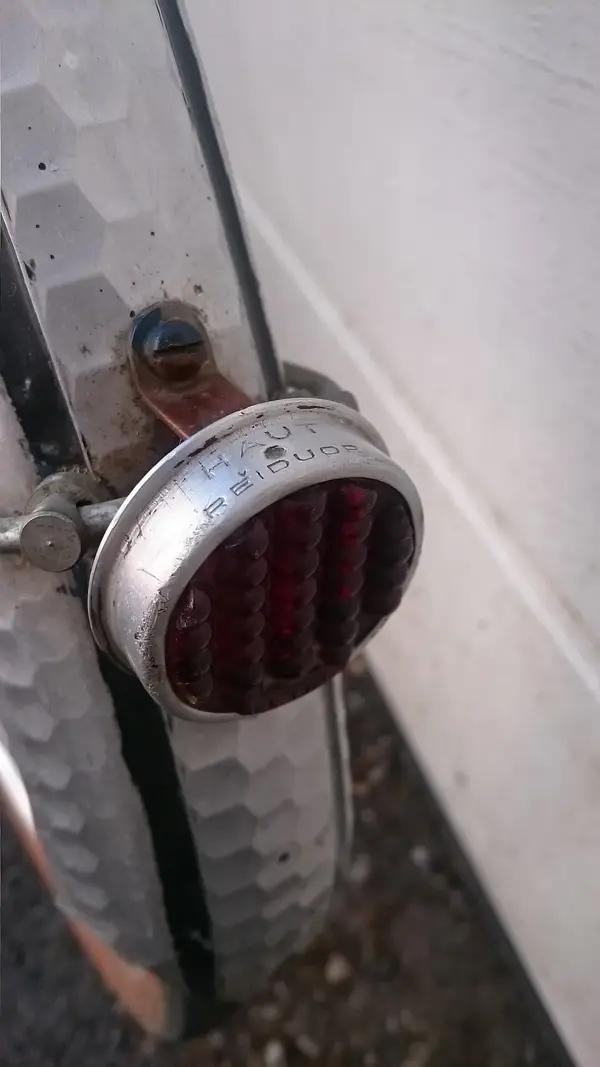
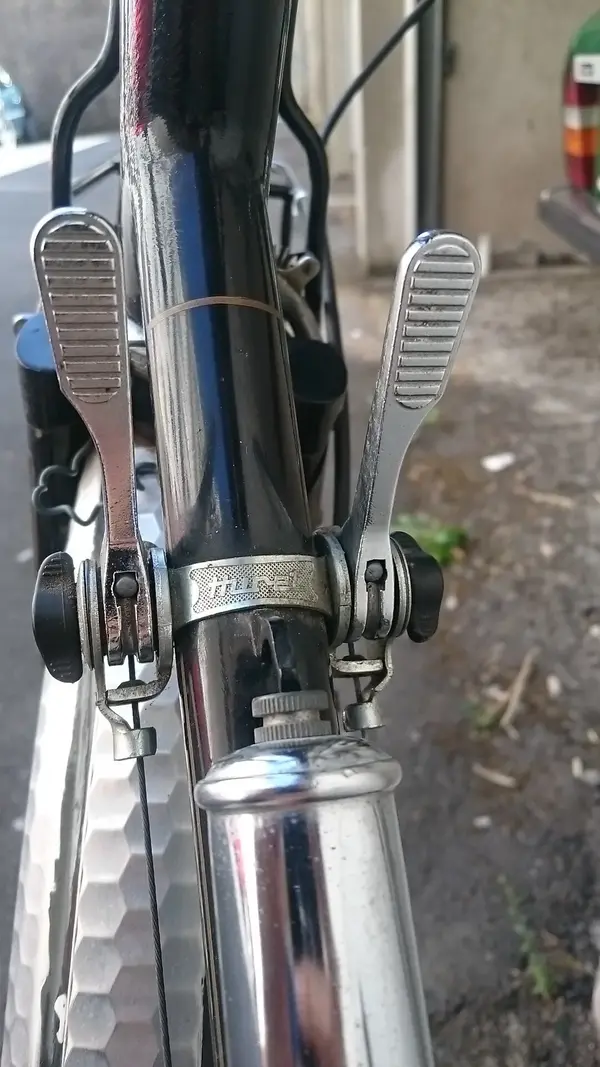
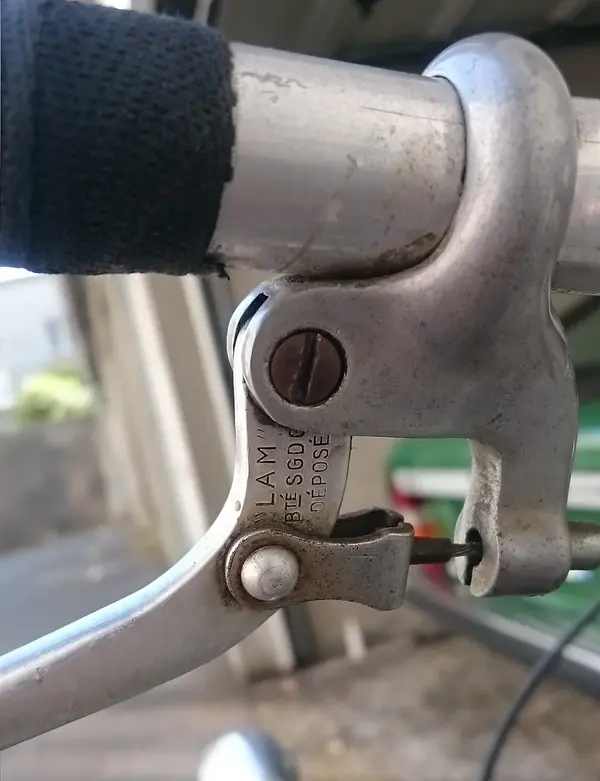
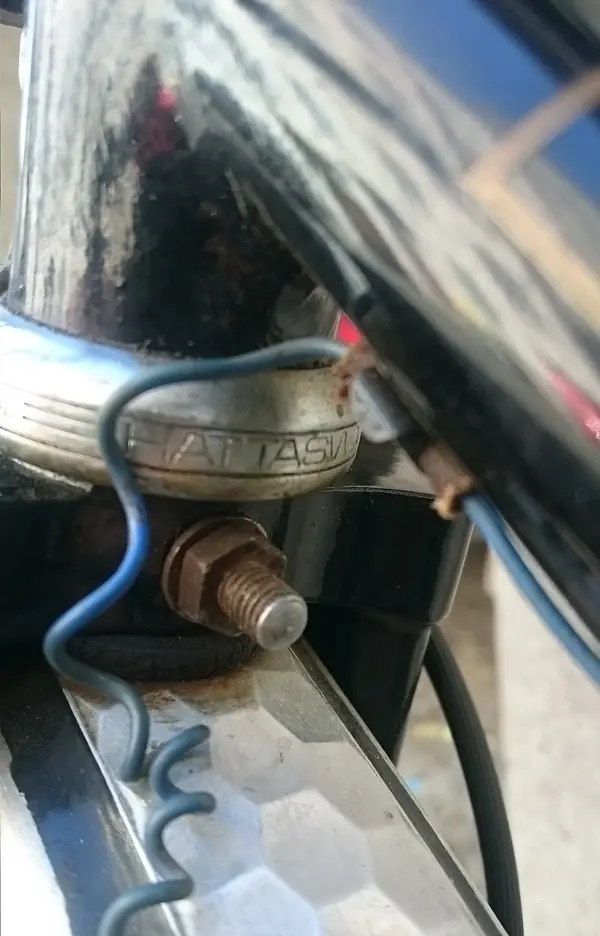
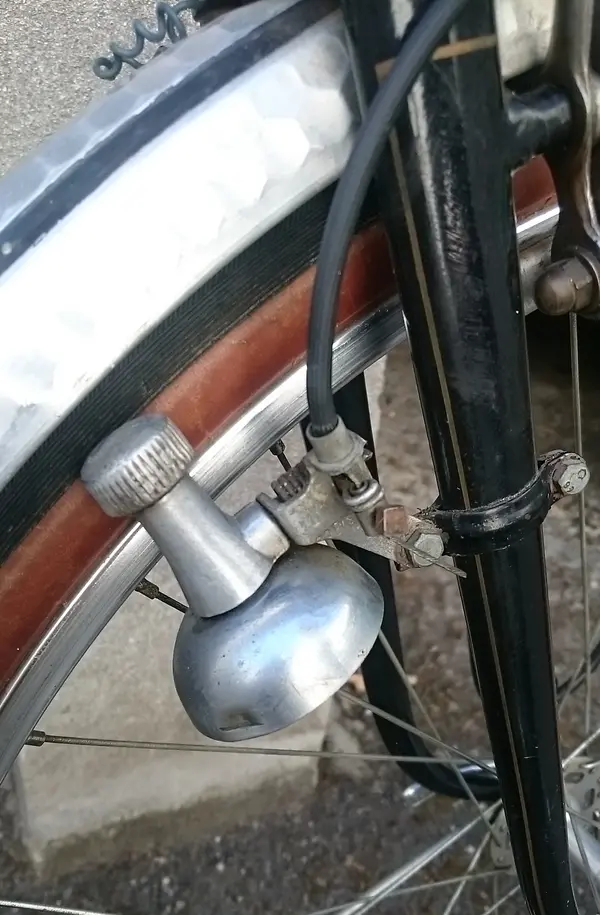
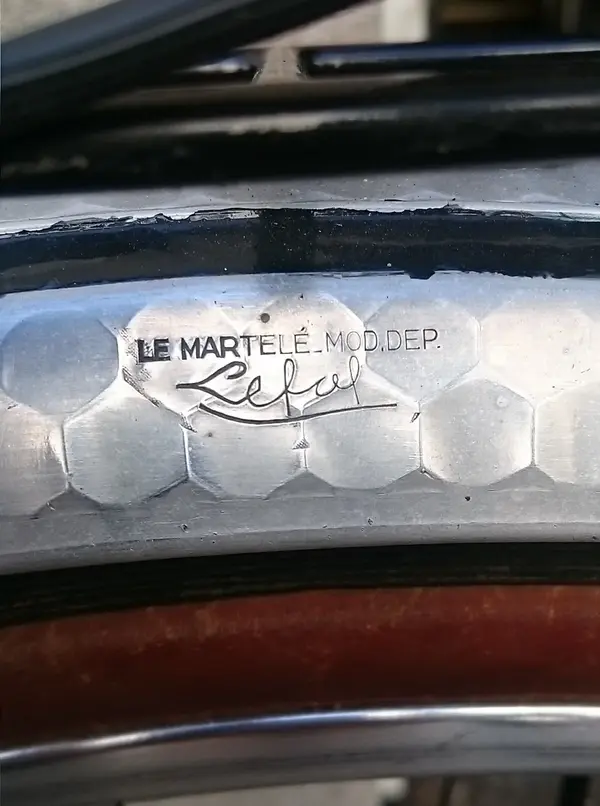
Guinessisgoodforyou
rBotM Winner
Guinessisgoodforyou
rBotM Winner
